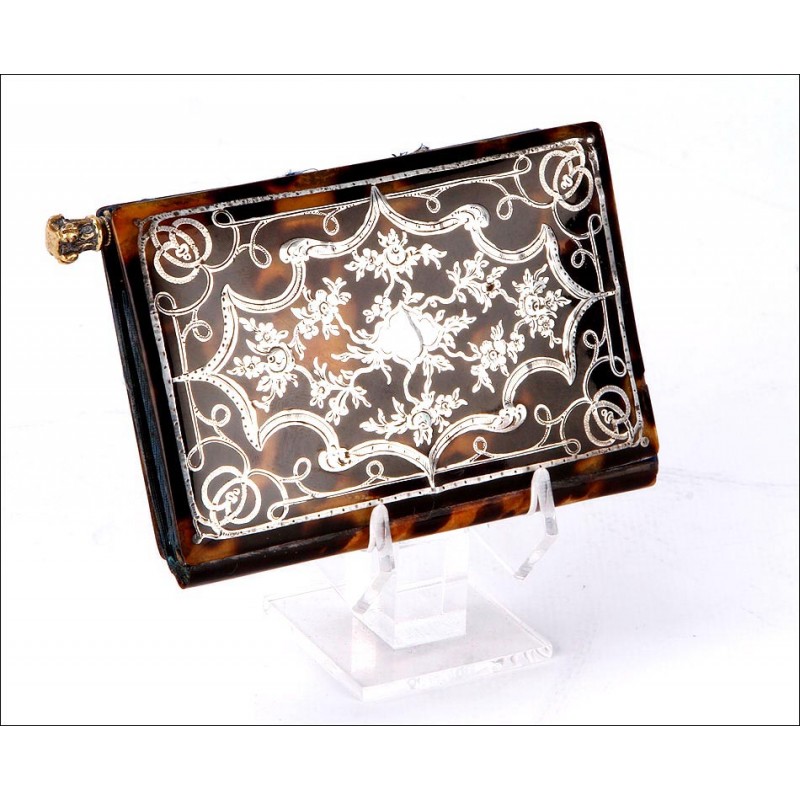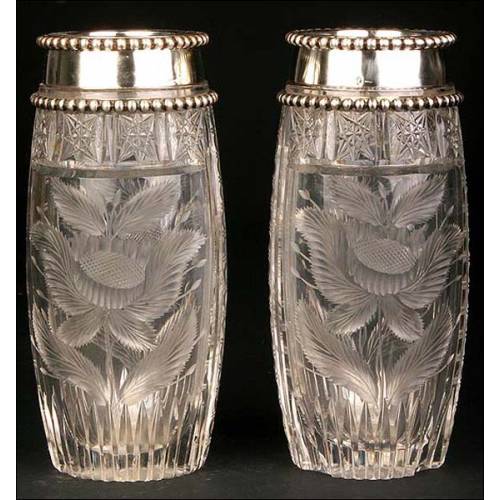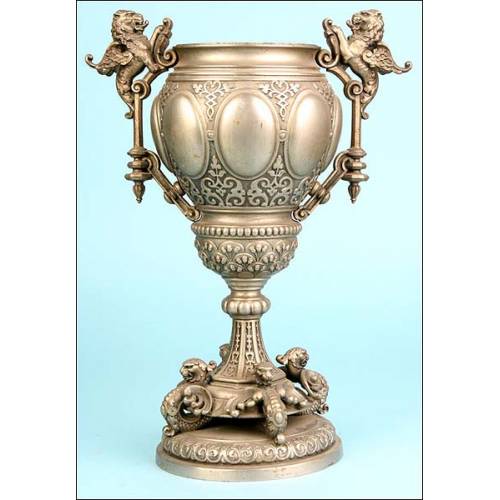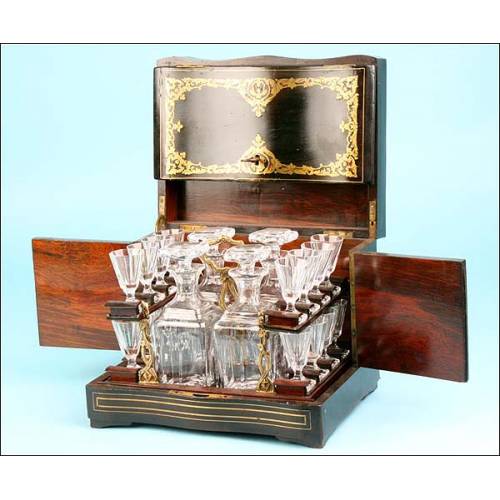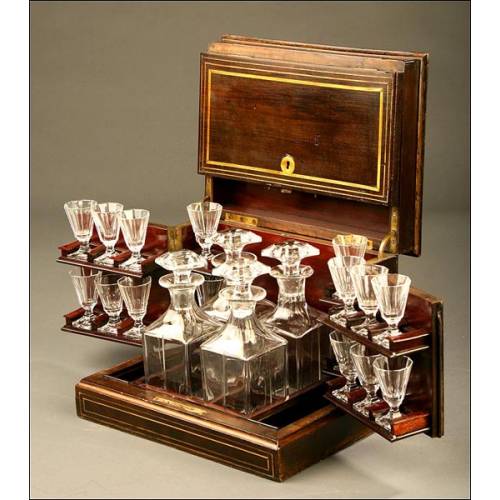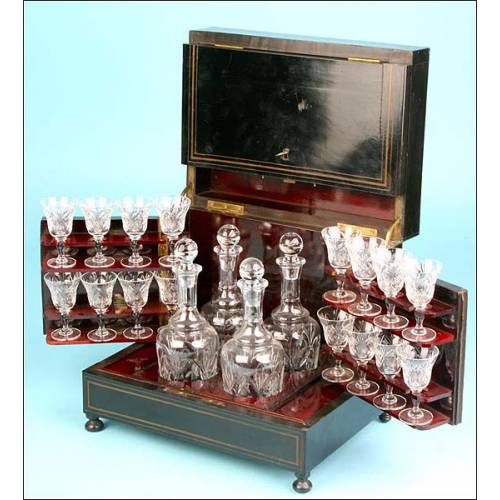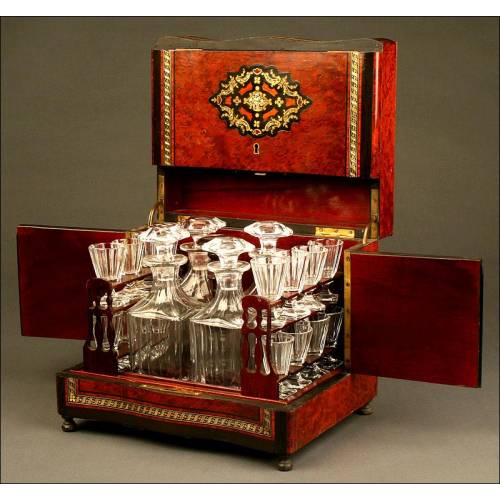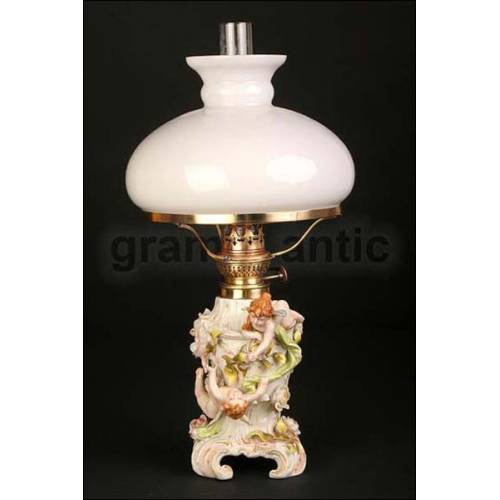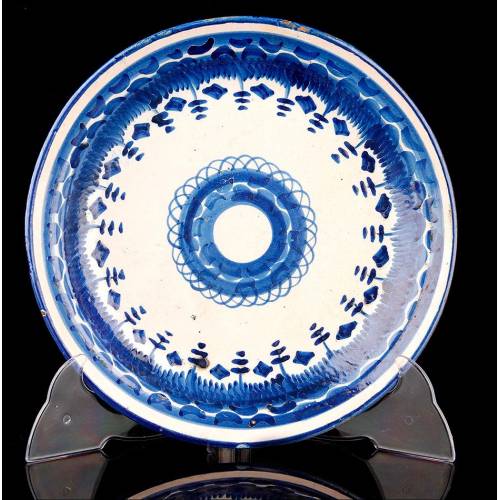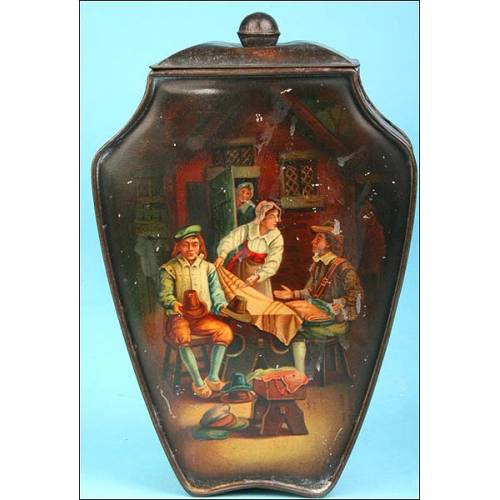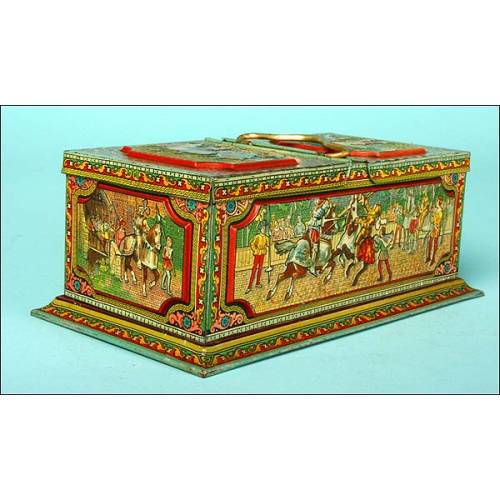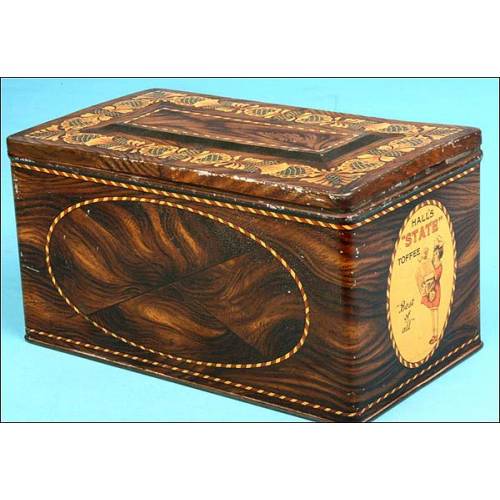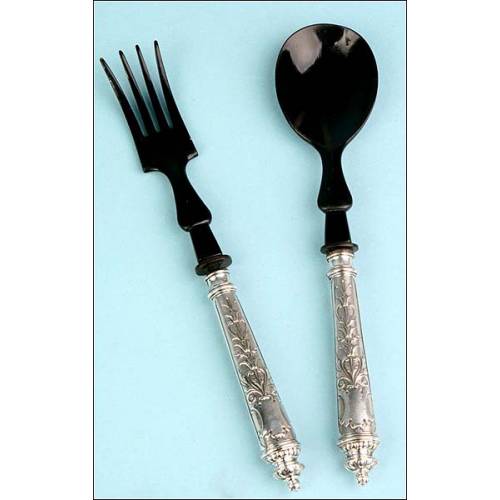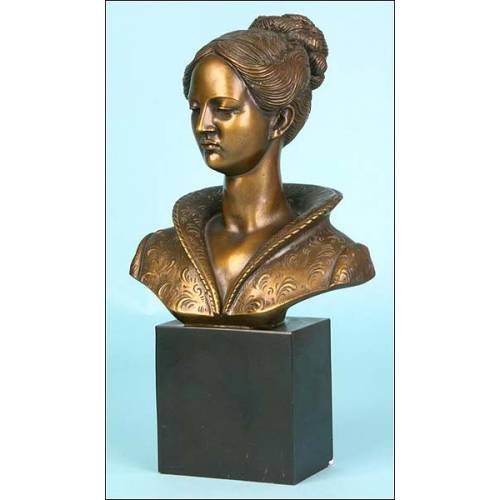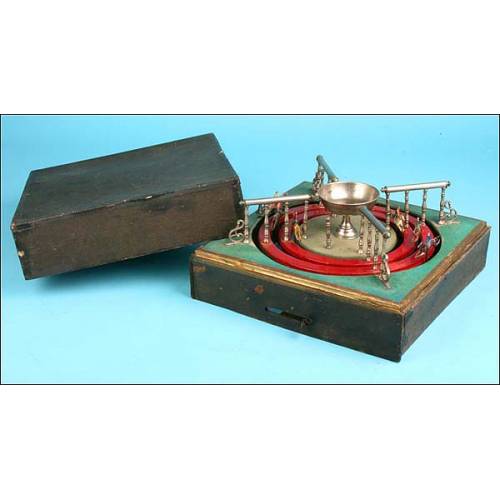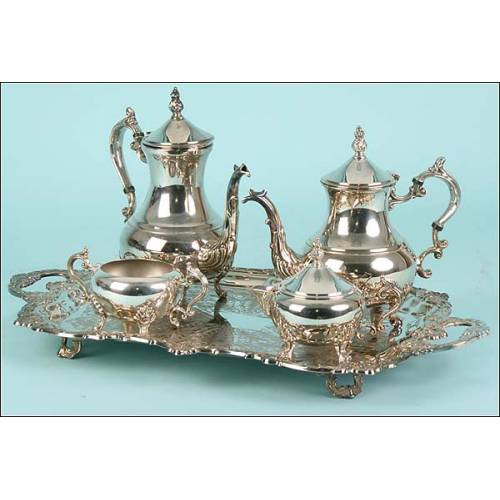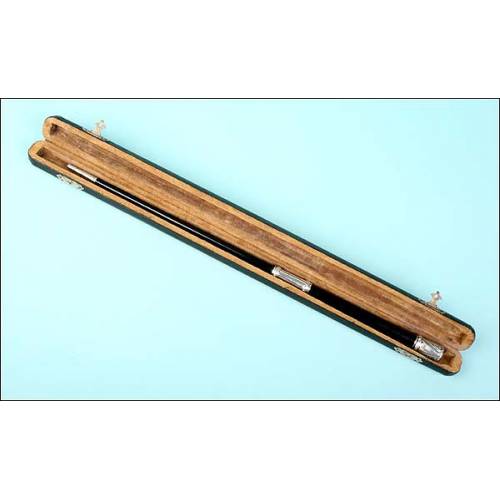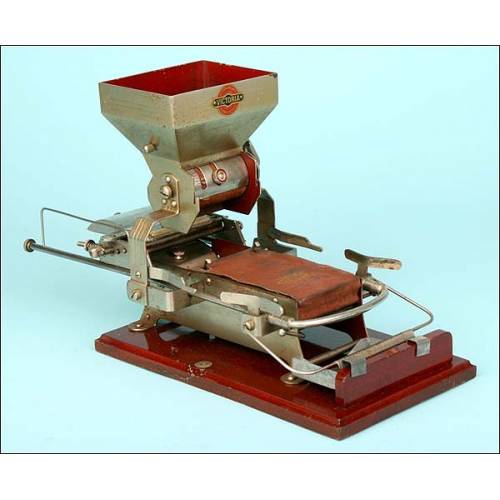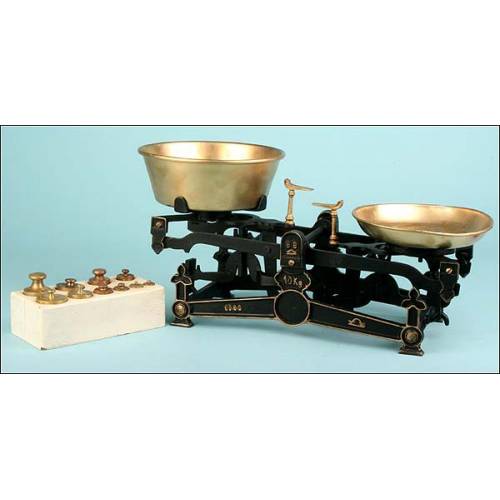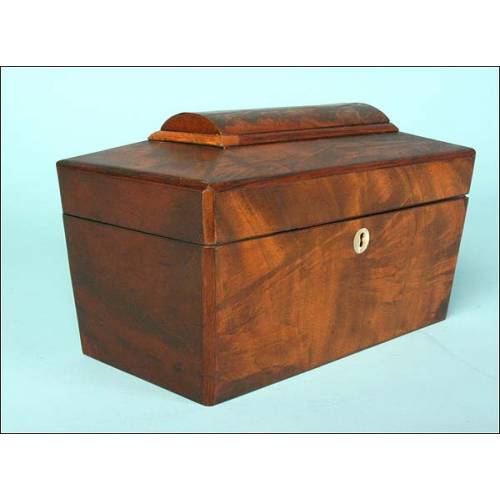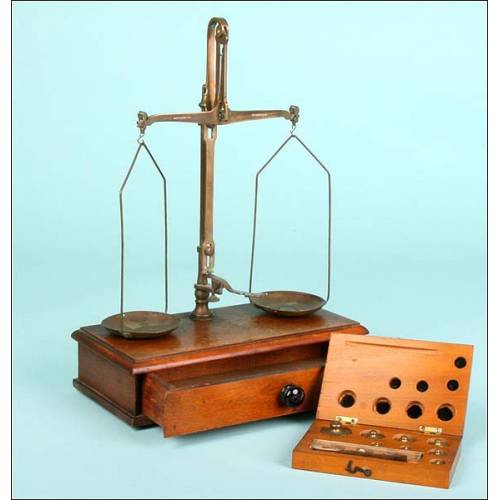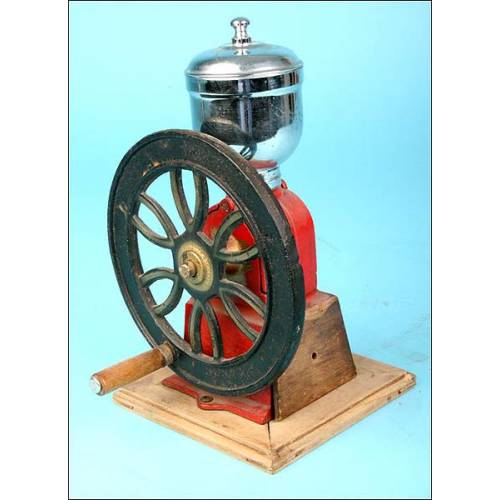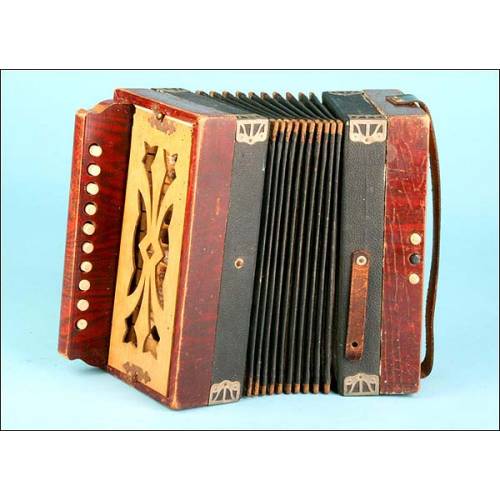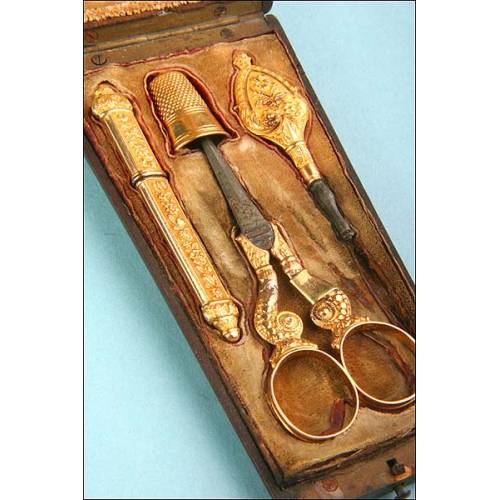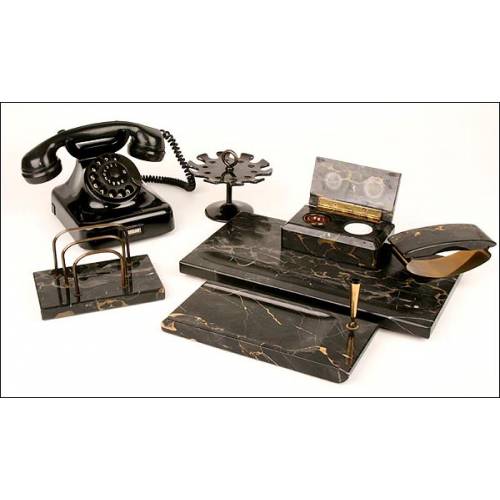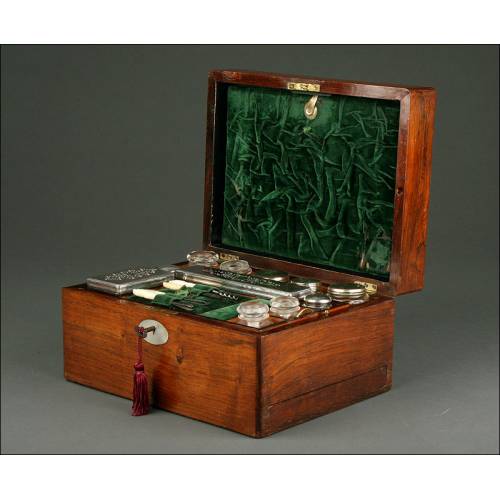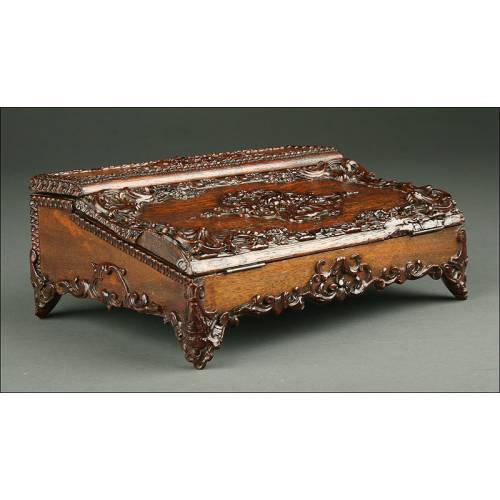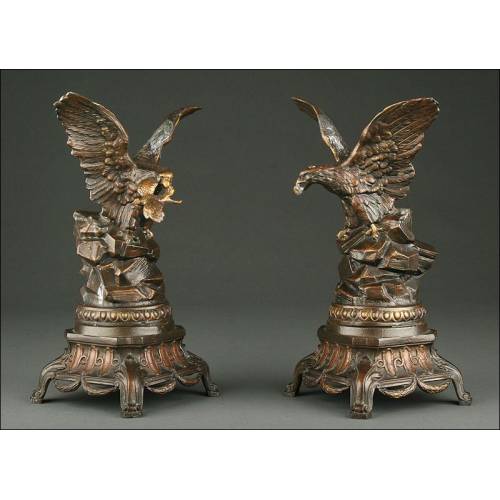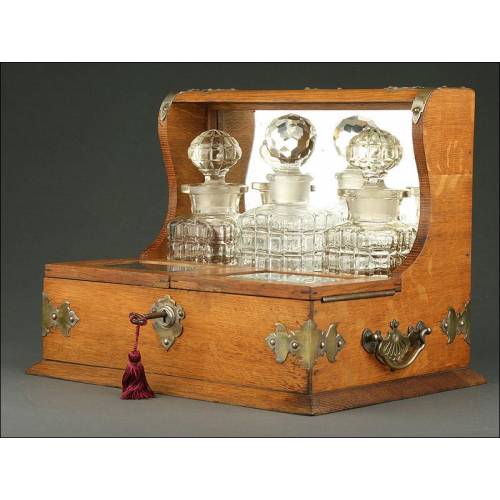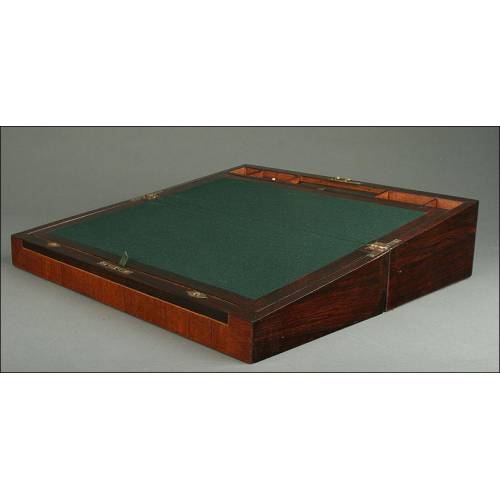B-747
Charming antique dance card in tortoiseshell and solid silver. France, XIX Century
Beautiful dance card in natural tortoiseshell and inlaid with solid silver. Includes silver pencil.
Sold!
This gorgeous piece is an antique dance card or small agenda, made in France in the 19th century (Napoleon III period) and in quite good condition. The card is composed of two real tortoiseshell covers, with the front cover decorated with a fine sterling-silver inlay detail. It includes a delicate silver mechanical pencil that mixes gold-plate and lean silver and a lovely hand-engraved decoration. Inside the covers are lined with a fine bright blue moiré, original from the period and in good condition. There is also a booklet composed of bone-colored paper pages, a type of agenda with the front page embellished by a charming engraving depicting three kids playing, dressed in an ancient way. There is also a page with the words LUNDI MARDI (Monday Tuesday) and fine flowery garlands. The booklet is bound with the same blue moiré that covers the inside of the dance card. As original as lovely, this ancient dance card or pocket agenda will be the best gift for a person who can appreciate the most delicate antiques. Measurements: Width: 3.5 in / 9.3 cm. Depth: 2.5 in / 6.5 in.History of the Dance Card A dance card or programme du bal (also known by its German-language name, Tanzkarte) is used by a woman to record the names of the gentlemen with whom she intends to dance each successive dance at a formal ball. They appear to have originated in the 18th century, but their use first became widespread in 19th century Vienna, especially at the massive balls during Fasching before Lent. An actual dance card is typically a booklet with a decorative cover, listing dance titles, composers, and the person with whom the woman intended to dance. Typically, it would have a cover indicating the sponsoring organization of the ball and a decorative cord by which it could be attached to a lady's wrist or ball gown. From the 19th century until World War I, dance cards for the elite of Austria-Hungary were often very elaborate, with some even incorporating precious metals and jewels.

